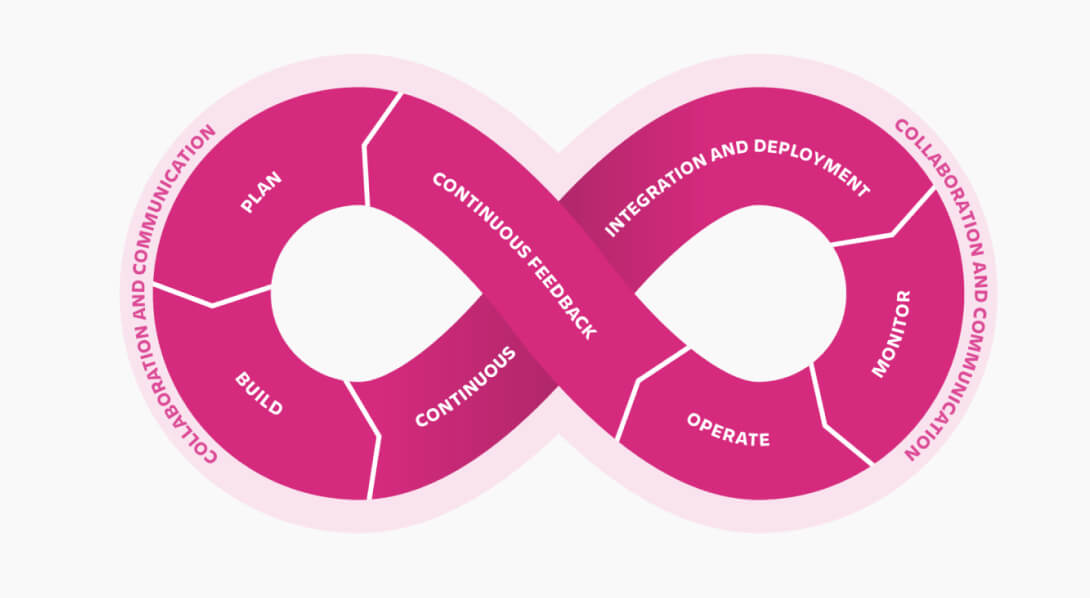DevOps has become the most effective software development strategy in the past few years. Previous methods used by businesses to assess their software operations often provided unreliable outcomes. This resulted in security threats that went undetected, leading the companies to pay heavy compliance fines. However, the incorporation of the DevOps lifecycle in the software development process has significantly eliminated such defects. Since it has a continuous delivery and deployment model, the efficiency of the companies has increased multifold and the main reason behind continuous delivery is continuous monitoring. Let’s deep dive into this essential part of the DevOps lifecycle.
What is Continuous Monitoring in DevOps?

Continuous monitoring helps companies review and monitor their processes for identifying any security risks and non-adherence to standard performances throughout the DevOps lifecycle. The biggest benefit of Continuous Monitoring is it helps solve the issues in real-time and gives relevant insights to the developers. Also known as Continuous Control Monitoring (CCM), this process improves the security throughout the company operations as well as the health of your IT infrastructure.
Types of Continuous Monitoring in DevOps
Companies usually check certain metrics to detect the risks and mitigate them in order to prevent any infrastructure or operations issues. To implement such security checks, companies monitor error codes, server-related issues or customer activities, etc. Here are some of the monitoring types that are typically conducted to ensure security threats stay at bay.
Application Monitoring
Application monitoring helps in gauging the overall health of an application. This includes – application performance, runtime, log checks, and security level of the application with the help of application monitoring tools.
Network Monitoring
This kind of monitoring involves tracking networking components like servers, routers, switches, and VMs. Network Monitoring Systems are generally used to measure the components of performance to check network failures or downtime.
Database Monitoring
Database monitoring as the name suggests includes monitoring of database connections, performance, run time, CPU or system errors, user sessions, buffer cache, etc.
Security Monitoring
Security Monitoring includes real-time monitoring of collecting data and analyzing it for security threats.
What are the benefits of Continuous Monitoring?

Continuous monitoring enables companies to keep a check on their networks, applications, softwares, and other infrastructure. Since it provides critical data in real-time, it helps organizations in taking critical risk management decisions. There are ample benefits that continuous monitoring delivers. Some of them are mentioned below:
Quick threat management
Continuous monitoring mitigates security issues more quickly by providing immediate alerts to the threats. Since the system is monitored constantly, the team is able to respond to such alerts rapidly. This reduces the prospective damage leading to application failure.
Performance catalyst
Continuous monitoring eliminates the issues of applications and protects businesses against losses. The cybersecurity performance indicators (CPI) provided by monitoring tools can help identify loopholes and security gaps.
Provides network transparency
Continuous monitoring helps in collecting and analyzing critical data automatically and makes sure to report if any event is missed by the system. It gives insight into the possible cyber threats to remediate the system faults and risks immediately.
Eliminates periodic testing
Continuous monitoring has eliminated the need for test wrist straps and to log the results. By utilizing the procedure of continuous monitoring, customers are ensuring that their products are manufactured in an ESD-protected environment. Moreover, this process doesn’t require daily maintenance of test logs and significantly reduces the time consumed in daily tests.
Reduces the system downtime
Technical glitches in the application can lead to prolonged system downtime and service interruptions. Continuous monitoring eliminates such performance issues because the software is being monitored all the way and all the issues that come up are immediately resolved.
Risk management with continuous monitoring in DevOps
Continuous monitoring plays a vital role in the Risk Management Framework (RMF). For the authorization of systems and ongoing assessments, RMF depends on Continuous Monitoring. For holistic risk management, Continuous Monitoring tools must be selected only after the risk management plan is in place.
It is essential to understand the level of damage an organization can resist, which factors have high-value risk, to what level the confidentiality of data must be maintained, or how security breaches or software and hardware issues can affect the organization.
Best practices to implement continuous monitoring
Just like continuous integration and continuous development, Continuous Monitoring is also a part of the DevOps lifecycle. It enables organizations to offer healthy, high-performing, and reliable applications as it continuously moves from developers to production to customers. However, to implement continuous monitoring it is necessary to take measures which are as follows:
- Enable web applications and services monitoring for complete observation.
- Monitor all relevant components of infrastructure like servers, security, networks, performance, etc.
- Maintain separate instances for monitoring multiple deployment environments in order to maintain data relevancy across all platforms, be it apps or infrastructure.
- Prepare workbooks with metric charts, log queries of guides for troubleshooting basic problems.
- Configure actionable alerts for any possible issues or failures.
Best DevOps tools for continuous monitoring
Here are some of the most popular and highly rated DevOps continuous monitoring tools that provide accurate risk alerts:
AppDynamics
AppDynamics is a continuous monitoring tool that monitors cloud computing environments and on-premises environments. It supports infrastructure, application, and network monitoring.
Akamai MPulse
Akamai MPulse collects and analyses behavior data and experiences of users visiting the application or website. It can capture performance metrics and real-time user activities from each user session by adding a snippet to the page it needs to analyze.
BMC Helix Operations Management
BMC Helix is an automation tool that follows a SaaS-based business model. This tool provides predictive alerts to monitor the performance of hybrid and on-premise environments.
Librato
Librato gives real-time operations analytics for creating metrics for real-time aggregation, transformation, alerting, anomaly detection, etc. It also gives notifications on the completion of activities on multiple metrics.
Splunk
Splunk searches, monitors, and analyses machine-generated log files. These log files are indexed in such a brilliant way in a central repository that it simplifies information access.
TaskTop Integration Hub
Tasktop Integration Hub takes care of software delivery integration requirements and contains all the tools in an organization in a single application.
Kibana
Kibana is another analytics and visualization tool that searches, views, and interacts with the data stored as log files. By analyzing the log files, Kibana helps identify issues in the production. Moreover, it has a simple setup procedure and is easy to use.
Conclusion
Though none of the systems are 100% safe, incorporating continuous monitoring reduces that risk by 97%. Continuous monitoring helps you understand business objectives which can then help determine the correct continuous monitoring solutions for your business requirements. Therefore, in order to implement CM effectively, ensure that the correct monitoring tools are used and the best practices are followed diligently.








